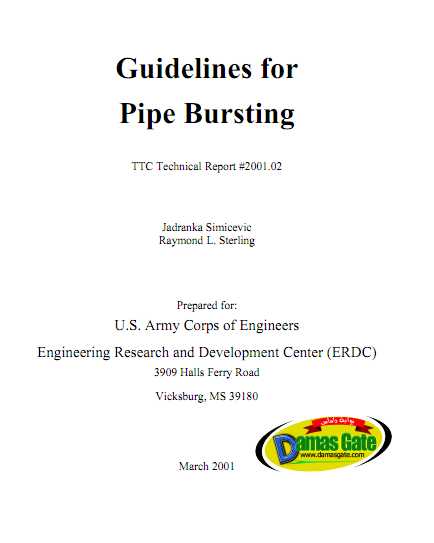Guidelines for Pipe Bursting
This report was prepared by the Trenchless Technology Center (TTC) for the U.S. Army Corps of Engineers, Engineering Research and Development Center (ERDC). Neither TTC, the U.S. Army Corps of Engineers, nor any person acting on their behalf, makes a warranty, express or implied, with respect to the use of any information, apparatus, method, or process disclosed in this report or that such use may not infringe on privately owned rights; or assumes any liabilities with respect to the use of, or for damages resulting from the use of, any information, apparatus, method, or process disclosed in this report.

General Description of Pipe Bursting In a typical pipe bursting operation, a cone-shaped tool (“bursting head”) is inserted into the existing pipe and forced through it, fracturing the pipe and pushing its fragments into the surrounding soil. At the same time, a new pipe is either pulled or pushed in the annulus left by the expanding operation (depending on the type of the new pipe). In the vast majority of pipe bursting operations, the new pipe is pulled into place. The new pipe can be of the same size or larger than the replaced pipe. The rear of the bursting head is connected to the new pipe, and the front end of the bursting head to either a winching cable or a pulling rod assembly1. The bursting head and the new pipe are launched from the insertion pit. The cable or rod assembly is pulled from the pulling or reception pit.
Download
*